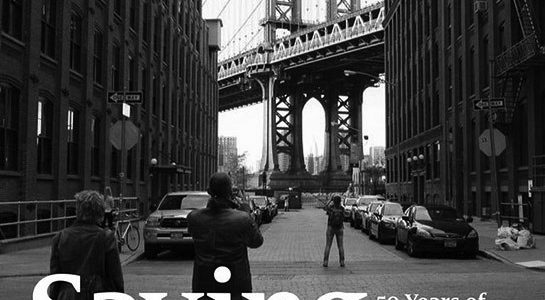
Two New Works on Preservation History
October 10, 2015
Article from the Fall 2015 Newsletter
The Museum of the City of New York has recently published two works on preservation history that deserve to be commended! Saving Place: 50 Years of New York City Landmarks is a companion piece to the exhibition currently at the Museum of the City of New York through January 3, 2016. It tells the story of the past 50 years of New York City’s Landmarks Law through essays by notable New Yorkers and preservationists including Robert A.M. Stern, Adele Chatfield-Taylor, Andrew S. Dolkart, Françoise Bollack, Anthony C. Wood, and Claudette Brady. These essays narrate the preservation movement from its origins and initial successes to some of its failures and most dramatic turning points. They explain the processes behind designating buildings and also evaluate contemporary additions to landmark buildings and new construction within historic districts. The predominately African-American neighborhood of Bedford-Stuyvesant, Brooklyn, is used as a case study for grass roots community-driven preservation in one of the essays, and lastly, there is a piece on the future of preservation in New York City. The book also includes both archival photographs and specially-commissioned contemporary photographs of historic districts and landmark buildings by the distinguished Dutch architectural photographer Iwan Baan. Encompassing all five boroughs, these images capture the dynamic role landmarks play in the fabric of New York City. With such a wide scope, Saving Place serves as both a document of how preservation has evolved in New York City, and a case study on how to protect the character of urban places.
The Museum of the City of New York also published a fantastic article on Albert S. Bard, the “grandfather” of the Landmarks Law, in their journal the City Courant. Written by Archive Project founder and chair Anthony C. Wood, the preeminent expert on Bard, Preserving the Patrimony of the People: Albert S. Bard and the Landmarks Law documents the tireless efforts of this civic activist, including the origins of and battle for what became known as the Bard Act (1956). This piece of legislation gave localities across New York State the authority to pass local laws to protect landmarks, and eventually enabled the creation of the New York City Landmarks Law. Playing out over 40 years, Bard’s advocacy for the importance of aesthetics includes run-ins with urban planner Robert Moses, struggles with politicians, and working alongside preservationists, all in his inspiring crusade to save the heart and the soul of the city he loved. Bard never lived to see the Landmarks Law get passed in 1965, but one can be certain that he would be celebrating alongside with us now that the law is turning 50. Make sure to catch Bard’s saga in the Spring 2015 issue of the City Courant, available through the Museum of the City of New York.